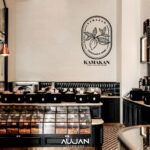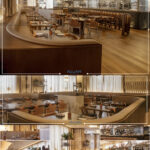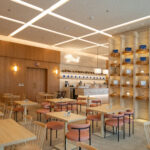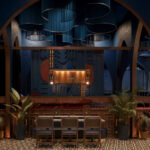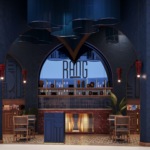Introduction
In today’s competitive business environment, first impressions aren’t just important—they’re everything. A company’s physical space speaks volumes about its identity, values, and professionalism. That’s where interior fit-out becomes a game-changing tool for branding. Whether you run a retail store, office, or restaurant, the way your interior looks and feels can powerfully influence how customers perceive your brand. From the color palette to furniture design, each element in your space plays a role in enhancing your brand identity.
Understanding Interior Fit-Out in a Branding Context
Before we dive deeper, let’s understand what interior fit-out means. A fit-out is the process of making interior spaces suitable for occupation. It includes everything from installing walls, flooring, lighting, furniture, and technology to painting and decorating.
Unlike basic interior design, fit-out focuses on functional adaptation, customizing a space to meet the business’s operational needs while visually representing its identity. This dual function makes it a perfect partner for brand strategy.
A fit-out isn’t just decoration—it’s a strategic implementation of brand values in spatial form.
The Psychology of Space: First Impressions Matter
Imagine walking into a high-end boutique. You instantly notice the subtle lighting, velvet textures, and soothing music. Now picture a startup office with bright walls, open workstations, and collaborative zones. What you’re feeling is the psychological impact of spatial branding.
- Visual cues like colors and lighting influence emotional responses.
- Smell and sound can create positive associations.
- Layout and flow influence how relaxed or rushed visitors feel.
This is no accident. Brands are increasingly leveraging interior fit-outs to design experiences that linger in memory and influence behavior.
Aligning Interior Design with Brand Identity
Your brand has a personality. Whether it’s bold and youthful or classy and serene, your space should echo that voice.
- Colors: A health-focused brand might use earthy tones, while a tech firm may go for sleek blacks and metallics.
- Logos and Fonts: Custom signage within the space reinforces recognition.
- Themes and Narratives: A children’s toy store might create a fairytale-like journey through its aisles.
Every wall, texture, and corner becomes a canvas for brand storytelling.
Layout and Spatial Planning Reflect Brand Values
The way a space is structured communicates non-verbal messages. Open-plan offices reflect transparency and collaboration. Private meeting pods may emphasize discretion and professionalism.
- Retail Layouts: Encourage discovery and flow.
- Hospitality Zones: Zone areas for rest, interaction, and transaction.
Spatial planning isn’t just about furniture—it’s about aligning space usage with the brand’s behavioral DNA.
Custom Fixtures and Furniture: Unique Brand Expression
Custom-made furniture and installations are your chance to go beyond cookie-cutter interiors and build a space that’s unmistakably yours.
- Reception desks shaped like a company logo
- Unique shelving patterns that reflect a brand story
- Branded seating with signature upholstery
These elements become Instagrammable, share-worthy aspects of your brand.
Lighting and Acoustics: Sensory Branding Tools
Lighting isn’t just for visibility—it’s for mood creation. Warm lights might invite intimacy in cafes, while bright white lights increase alertness in coworking spaces.
- Adjustable lighting systems allow for brand versatility.
- Acoustics control enhances comfort and reduces stress.
Together, they translate your brand’s emotional tone into tangible ambiance.
Material Selection and Textures Communicate Brand Quality
Are you a sustainable brand? Reclaimed wood and bamboo surfaces can communicate that. Do you aim for luxury? Marble floors and brass accents say it all.
- Textures impact tactile memory.
- Materials evoke trust or exclusivity.
The subconscious messages of material choices form lasting impressions in customers’ minds.
Certainly! Continuing from where we left off:
Digital Integration and Smart Interiors
In the digital age, your brand doesn’t stop at physical design—it extends into technology. Smart interior fit-outs integrate digital solutions that elevate user experience and showcase innovation.
- Interactive touch screens for customer engagement
- Digital signage that updates in real-time with promotions or updates
- IoT systems that personalize lighting, temperature, or background music based on usage patterns
These integrations create a tech-forward impression, aligning your business with modernity and responsiveness.
Enhancing Employee Engagement and Internal Branding
Branding isn’t just customer-facing—it’s internal too. The design of your workspace significantly impacts employee satisfaction, motivation, and performance.
- Spaces that reflect core values foster a sense of belonging
- Branding elements (slogans, mission statements, color schemes) can be subtly integrated into work zones
- Breakout areas, focus zones, and collaborative lounges improve morale and productivity
Interior fit-out ensures your people are as aligned with your brand as your customers are.
Customer Experience and Journey Mapping Through Design
Every point of contact within your space should be intentional. Mapping out the customer journey ensures that their experience aligns with the emotions and perceptions you want your brand to convey.
- Entry areas should be welcoming and informative
- Wayfinding signage should be clear and brand-aligned
- Checkout and service points should feel efficient yet human
This strategy doesn’t just guide customers—it immerses them in your brand story from start to finish. Retail and Hospitality Case Studies
Let’s look at real-world examples to see branding through fit-out in action:
1. Boutique Café Chain
- Used reclaimed wood, handwritten menus, and exposed brick to create a cozy, artisanal brand.
- Result: Increased footfall and social media shares by 40%.
2. High-End Retail Store
- Integrated LED lighting, high-gloss surfaces, and custom mannequins to highlight luxury.
- Result: Improved average purchase value by 25%.
These success stories show how strategic design choices can translate to tangible business results.
Office Spaces: Merging Functionality with Identity
Modern office design isn’t about cubicles anymore. It’s about designing workspaces that breathe brand culture.
- Creative agencies use bold colors and open spaces to reflect energy and innovation.
- Law firms might choose subdued palettes, wood textures, and private cabins to convey trust and tradition.
Function meets form when workspaces are built not just to serve, but to inspire.
Environmental Branding and Wayfinding
Environmental branding is the practice of using space itself as a storytelling tool. This includes everything from signage to decor to layout.
- Cohesive visuals make navigation intuitive and pleasing.
- Consistent use of typography and icons builds familiarity.
- Strategic messaging on walls or installations reminds visitors what your brand stands for.
When well-executed, wayfinding becomes an invisible guide that amplifies brand identity.
Budgeting and ROI in Branded Interior Fit-Outs
Many businesses hesitate to invest heavily in interior fit-outs, fearing high costs. But what’s often overlooked is the return on investment (ROI).
- Branded environments increase customer dwell time, improving conversion rates.
- Employees in well-designed offices report higher satisfaction and lower attrition.
- Brand-consistent spaces enhance trust and word-of-mouth referrals.
You’re not just decorating—you’re investing in your business’s future.
Working with Interior Fit-Out Specialists
To ensure success, it’s crucial to partner with experienced fit-out specialists who understand brand strategy as well as design.
Frequently Asked Questions (FAQ’s)
Q: Is interior fit-out really necessary for branding?
A: Absolutely. It gives physical form to your brand’s personality, influencing both customer perception and employee engagement.
Q: How much should I budget for a branded fit-out?
A: Costs vary based on size and complexity, but even small updates can yield strong branding results. ROI should be considered beyond immediate expense.
Q: Can a branded fit-out help with customer retention?
A: Yes. A memorable and comfortable environment encourages repeat visits and strengthens emotional brand connection.
Q: What’s the difference between interior design and fit-out?
A: Interior design focuses on aesthetics and layout. Fit-out includes structural, electrical, and furnishing elements—essential for full branding integration.
Q: How long does a typical commercial fit-out take?
A: It depends on scale, but most projects range from a few weeks to several months, including planning, execution, and testing phases.
Q: Can fit-out improve team productivity?
A: Definitely. Tailored spaces boost morale, collaboration, and efficiency by aligning with employees’ functional and emotional needs.
Conclusion
In the ever-evolving commercial landscape, your space is your silent salesperson. Through careful planning and execution, interior fit-outs transform ordinary spaces into brand ambassadors. From visual aesthetics to user experience, everything your customer sees, hears, and feels within your space contributes to their perception of your brand.


